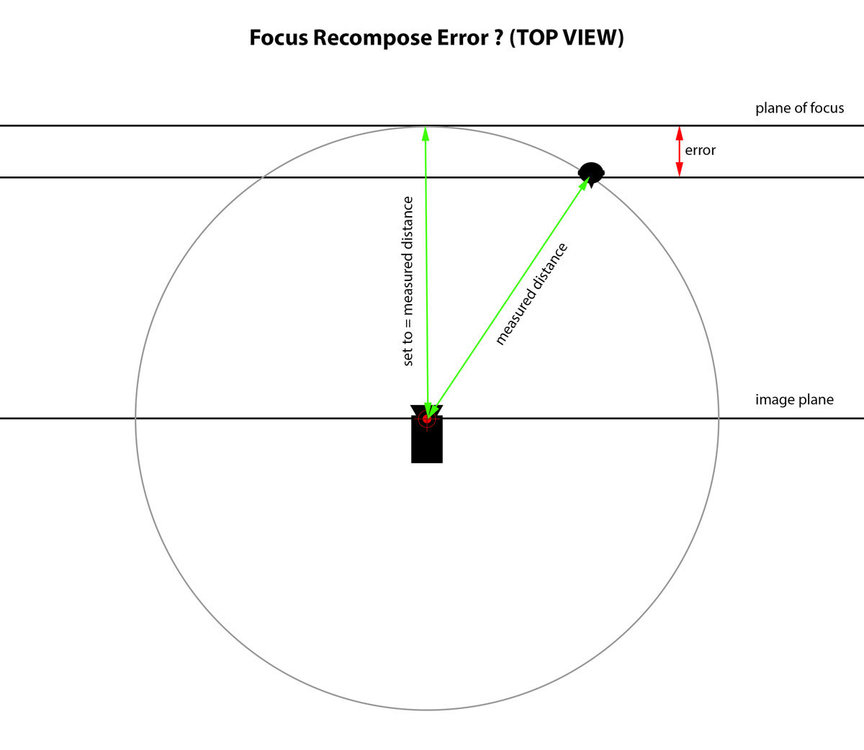-
Posts
444 -
Joined
-
Last visited
Everything posted by Mei Lewis
-
Thanks Greg, and thanks for the link. Having read the link I now think that field curvature is also an issue, in addition to the "measuring the wrong distance" problem my original question was about. I mostly work on small productions and operate and focus pull myself, using the image being recorded, looking at an electronic viewfinder or screen. This mostly avoids potential issues with field curvature and trigonometry/measuring to the wrong point , but is susceptible to other issues e.g. lack of resolution on screen/viewfinder to know if something is truly in focus.
-

Professional image pipe line(learning resource)
Mei Lewis replied to Anne Bauchens's topic in Camera Assistant / DIT & Gear
Just re-read most of Yedlin’s site and there’s a lot of good info there not seen elsewhere. I’d not heard of an equisolid lens before, and my understanding of rectilinear is a lot clearer now. I do wish he’d give details of his ‘process’ though. Even if it _is_ too specific and complicated for others to use, keeping it secret is totally at odds with what he seems to be trying to do i.e. remove the magical thinking and mystery often associated.- 13 replies
-
- dit
- monitoring
-
(and 2 more)
Tagged with:
-
I've done effectively the same experiment many times with a full frame stills camera, while trying to use the 'focus recompose' technique for getting focus. It doesn't work well for wide apertures and close subjects, so I went about figuring out why, and realised it's because the plane of focus stays parallel to the sensor plane, and therefore moves behind the subject if you reframe them from the centre to the edge of frame. Just tried it again with a 24mm f1.4 lens on full frame, rotating in my office chair, and the subject, a tea cup about 3 feet away, visibly goes out of focus. The linked article mentions the issue I'm asking about (it's point 4) so it's well known in still photography. I think that a flat object _parallel to the sensor plane_ stays in focus across the plane (ignoring field curvature, mentioned elsewhere), but that's why measuring diagonally won't work for off center subjects. But it really seems like from all the answers that it's 'good enough' in most cases. Maybe that will change with increasing use of large format sensors in video (Alexa LF etc).
-
I wasn't referring to field curvature. AFAIK they *try* to design lenses so that the focus plane _is_ a plane. They're far from perfect, but I *think* the effect is much less than the one I'm talking about here. I've not seen the curves for any cine lenses, but I have seen them for stills lenses. Lensrentals have some interesting charts the curvatures are typically quire complex: https://www.lensrentals.com/blog/2014/09/field-curvature-and-stopping-down/
-
In what way would motion blur be different with digital?
- 83 replies
-
- robert de niro
- dc films
- (and 8 more)
-
Nearly five years later and I've been on many sets, but still don't know the answer to this one. I know what I do, but that's probably considered a hack by most ACs. Here's a concrete example. The difference in distances can be quite significant. Here the diagonal measured distance is 2.2m, whereas the focus distance should be set to 1m.
-

The Mandalorian - Greig Fraser / Barry Idoine
Mei Lewis replied to Miguel Angel's topic in On Screen / Reviews & Observations
This is one of the best things about it! There's no overall story arc to life, and no resolution. There doesn't need to be in fiction either. I hope we never find out who Baby Yoda is.- 22 replies
-
- the mandalorian
- disney+
-
(and 2 more)
Tagged with:
-
Daylight coming in through the far end of the tunnel, a tungsten source low down just the other side of the figures and a small amount of practical light from their lamps.
-

The Mandalorian - Greig Fraser / Barry Idoine
Mei Lewis replied to Miguel Angel's topic in On Screen / Reviews & Observations
Mandalorian, great it is. Never expected to see a cross between Lone Wolf and Cub, Clint Eastwood, Metroid and Star Wars.- 22 replies
-
- the mandalorian
- disney+
-
(and 2 more)
Tagged with:
-

Cheap diffusion filters - are there any?
Mei Lewis replied to Mei Lewis's topic in Lenses & Lens Accessories
Great, thanks David and Phil. I've ordered a couple of cheap UV filters of the correct size I'm going to try making something out of those and some tights/hosiery, and see if I can get hold of one of the lee filters. -

Cinematography techniques for photography
Mei Lewis replied to anthony le grand's topic in General Discussion
This is possible to do in-camera under some circumstances. If you have your camera on a tripod try shooting a long exposure, say 1second, and manually unfocus the lens during only part of the exposure. Will probably take a few attempts and good timing. If your camera has a multi-exposure mode (I think my Canon 5d3 does) take two of the same shot but with one of them out of focus. In studio flash photography, with a dark room and the only continuous lights the modelling lights on the flash, if you set the shutter speed fairly slow for flash, say 1/8th of a second, and hand hold the camera you will get a sharp image from the flash and a very slightly blurred overlaid image from the modelling lights. The slight blur will typically be sligjtlty warmer (modelling lights are usually tungsten balanced) and that is flattering to skin. This looks a lot like a diffusion filter on skin. -
I'd like to get a round, 82mm diffusion filter, something like Tiffen black promist. Each of those is about £150 / $200 and I'd need more than one. Anyone know a cheap alternative? I mean a proper filter I can buy, not smearing vaseline on the lens or similar. Amazon and ebay don't seem to have anything, but there _are_ cheap versions of other filters, like variable ND and polarizing filters. Are there no cheap diffusion filters because there's little demand?
-
Four Lions (https://www.imdb.com/title/tt1341167/) uses extreme zooms several times throughout, used to great effect to show the characters relationship to their environment.
-
> Every f-stop number is the double or the half the number two stops over, i.e. f/1.4 to f/2.8 is a two-stop jump. f/2 to f/4 is a two-stop jump. This is another application of an inverse square law, and closely connected to the one Max is probably referring to in the original post, about light fall off with distance from the source. "Every f-stop number is the double or the half the number two stops over,” is equivalent to saying "Every f-stop number is √2 or 1/√2 times the f-stop number one stop away from it" For a given focal length, f-number is proportional to the inverse of the diameter of the entrance pupil of the lens (just using the formula for f-number). The amount of light the lens passes is proportional to the area of the entrance pupil (a circle), which is in turn proportional to the square of the circle's diameter (because area of a circle is pi r^2). So overall the amount of light that passes is proportional to the inverse square of the f-number. E.g. double the f-number and the amount of light drops to a quarter. Realising this made it easier for me to understand the seemingly strange pattern of f-numbers. What is marked on lenses is usually an approximation of the true sequence which is: 1, √2, 2, 2√2, 4, 4√2, 8, 8√2, 16, 16√2… The reason for the inverse square law of light fall is, roughly, because light emanates from its source in a sphere. At any given distance from the point of emanation the area of the sphere, over which the light is spread out, is proportional to the square of that distance, because the area of a sphere is 4πr^2, and the brightness of the light is inversely proportional to that area (you can think of the same amount of light being spread out over a larger area).
-
A lot of the daytime look of The Witch seems to be down to the overcast skies and grading. They may have used negative fill and bounce on the closeups. They may have shot at specific times of day to get the light direction they wanted. ... Looks like the above is a reasonable guess: https://www.indiewire.com/2016/03/how-director-robert-eggers-and-dp-jarin-blaschke-created-the-look-of-the-witch-61934/ "Blaschke: Once we waited for the gloom, the grip department would just give it a little shape. The light tends to come from one direction and I’d just further take down from the other direction. The base light had to be real overcast weather and we’d just put some nets and solids on the side to strengthen what the light was already doing."
-
I think you're a bit wrong about what is happening with your camera. The Raw and Mraw settings are for still photos only. Your camera doesn't record raw video, only .mov (h.264). Definitely check out working with proxies by the way. The way they work in premiere is very convenient once you get the nag of it.
-
Does anyone have the .pdf that was linked please? The link on the kodak site is dead.
-
Do you have a work visa?
-
For me the only noticeable difference between those two images is the bright hairlight on the Alexa shot, which makes it feel much more balanced.
-
https://vfxblog.com/2017/10/26/lets-move-to-la-in-2049/ This interview has blurred my understanding of what a cinematographer is. I think many people would watch BR2049 and credit Roger Deakins with the look of the cityscapes, but it seems that's not (entirely) the case.
-
It seems to me the point of this forum is to discuss, learn about and advance cinematography. Certainly opinions and subjectivity come into it, but if we're to progress we need to be able to accurately and unambiguously describe the aspects of cinematography we're talking about. From that point of view, saying an aquisition or display system is 'soulless' is useless. That statement can't be acted on. A digital sensor or projector maker can never make their system less 'soulless' because you can't tell them what it is you mean by 'soulless'. We're not talking about magic, we're talking about recording two dimensional images inside small rectangles, where each point within the rectangle can be completely specified by three continuous variables (for example, R, G and B values). There is nowhere in there for a soul to hide.
-

Which 2 of these 3 shots cut?
Mei Lewis replied to Mei Lewis's topic in Students, New Filmmakers, Film Schools and Programs
Thanks everyone. I like Adrian's idea about an extra shot. -
Shooting a short film today and myself and the director disagreed about which shoulder we should come over when looking at the phone to match the wider shot. So we shot both. I think the matching shots are 1 and 3. The 'line of action' is between the girl and her phone, and by coming over her right shoulder to look down at the phone we don't cross that line. Who was right? I'm still nowhere near as good about this stuff as I should be. Any links to resources would be appreciated. Thanks.









